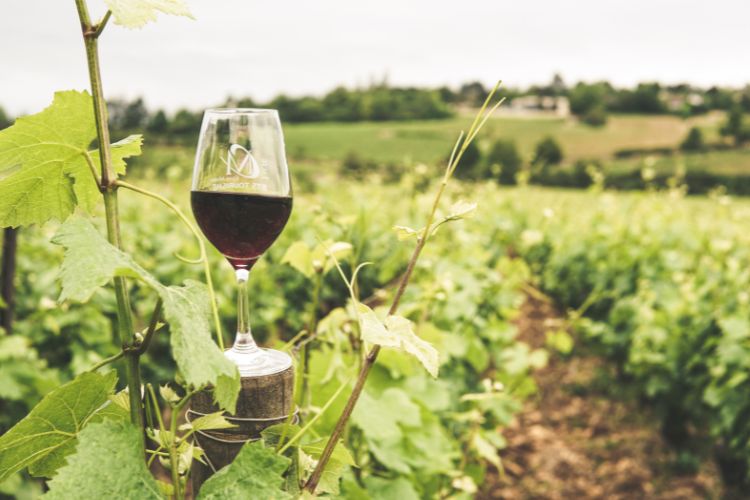


Web Design for Wineries: Creating a Digital Experience as Refined as Your Wine
In the increasingly competitive wine industry, your digital presence can be a defining factor in attracting, engaging, and retaining loyal customers. With more wine lovers turning to the internet to discover new vineyards, book tastings, and purchase bottles, a winery’s website isn’t just an online brochure—it’s a vital part of your brand’s storytelling and sales strategy. In this article, we will explore the fundamental elements of web design for wineries, focusing on user experience, aesthetics, functionality, SEO, and eCommerce integration. Whether you’re a small boutique vineyard or a large winery estate, the following insights will help you design a website that reflects the quality and personality of your wines while converting visitors into customers.
Understanding Your Winery’s Audience
Before you even begin designing your winery website, it’s critical to understand who your audience is. Wine consumers range from casual drinkers seeking a weekend tasting experience to sommeliers looking for high-end vintages. Tailoring your web design to your target demographic helps in creating a seamless and satisfying user journey.
- Tourists and Visitors: They typically seek winery location, tasting room hours, booking options, and photo galleries to visualize the experience.
- Online Shoppers: These users want a quick, intuitive way to purchase wine online and find information about delivery and shipping.
- Wine Club Members: They’re looking for exclusive content, events, and purchasing options tied to their membership.
- Restaurant Buyers and Retailers: More interested in wine portfolios, awards, technical datasheets, and contact information for B2B relations.
By identifying your primary target groups, you can plan your website content, design elements, and functionality to match their expectations and drive better engagement.
Crafting a Visually Rich Aesthetic
Wine is as much about the experience as it is about the flavor. A successful winery website should visually convey the elegance, tradition, or innovation your brand represents. Web design must blend artistry with usability.
Key visual design elements to consider include:
- Professional Photography: Invest in high-quality images of your vineyard, cellar, wine bottles, events, and tastings. These images create an immediate emotional connection.
- Color Palette: Use colors that reflect the wine experience—deep reds, golds, earthy greens, or soft whites—to influence mood and brand perception.
- Typography: Stylish, legible typography helps maintain a high-end feel while ensuring content is easy to read.
- Whitespace and Layout: Allow for breathing room in your design to avoid clutter and lead the visitor’s eye through the site with intent.
From your homepage to your checkout page, every element should feel cohesive and support your winery’s story and tone.
User-Friendly Navigation and Mobile Optimization
Your website should be simple to navigate and optimized for mobile users. Nearly 60% of internet traffic now comes from mobile devices, and many users might be searching for your winery while en route on a road trip or visiting your region.
Ensure an optimal user experience through:
- Main Menu Simplicity: Limit top-level menu items to 5–7 entries, such as Home, Wines, Visit Us, Wine Club, and Shop.
- Mobile Responsiveness: Use responsive design practices so your content adjusts beautifully across all screen sizes.
- Fast Loading Speeds: Optimize image sizes, leverage browser caching, and use content delivery networks to boost site speed.
- Clear Calls to Action (CTAs): Use obvious buttons for actions like “Book a Tasting,” “Join the Wine Club,” or “Shop Now.”
Exceptional usability ensures that visitors can quickly find what they’re looking for, increasing engagement and reducing bounce rates.
Showcasing Wine and Tasting Experiences
Think of your website as an online tasting room. It’s not just about listing wines like products in a catalog. What sells is the story behind each bottle, the terroir, the grape variety, the crafting process, and the pairing suggestions.
To create engaging wine showcase pages:
- Use Multimedia: Combine product photography, short videos from the winemaker, and interactive 360° views of bottles or tasting rooms.
- Storytelling: Accompany each wine with descriptions that evoke its flavor notes, origin, and personality—beyond technical details.
- Recommendations: Suggest food pairings, similar products, or bundles to increase time-on-site and average order value.
- Wineries on the Map: Use embedded maps and trip-planning widgets for ease of finding and visiting your location.
For on-site tastings and tours, a streamlined booking system integrated with your calendar is essential for providing a seamless customer experience.
eCommerce Integration and Wine Club Functionality
Turning your website into a revenue-generating platform is a central goal. With legal regulations differing from state to state or country to country, it’s important to implement an eCommerce platform that supports age verification, shipping legality compliance, and secure transactions.
Important features to integrate include:
- Product Pages: With inventory updates, vintage-based variations, and ability for customer reviews.
- Secure Checkout: Support for major credit cards, Apple Pay, Google Pay, and even Buy Now Pay Later options.
- Integrated Wine Club Portal: Enable members to manage their subscriptions, access exclusive deals, and RSVP to events.
- Email Marketing Integration: Collect email addresses through newsletter opt-ins and follow abandoned cart emails.
Investing in scalable eCommerce infrastructure ensures easy management for your staff and confidence for your customers.
SEO Strategies for Winery Websites
No matter how beautiful or functional your website is, it must rank well in search engines for users to find you. SEO (Search Engine Optimization) for wineries involves both on-page and technical strategies that improve visibility in organic search results.
SEO best practices for wineries include:
- Keyword Research: Identify high-value phrases like “best wine tasting in [your region],” “buy [wine type] online,” or “join wine club USA.”
- On-Page Optimization: Use meta titles, descriptions, headers, and alt text that include target keywords naturally. Utilize free tools like RibbitRank for expert content recommendations.
- Local SEO: Register your winery on Google Business Profile and use schema markup to improve local visibility on maps.
- Blog Content: Regular blog posts on wine education topics, food pairings, seasonal events, or wine region highlights keep your site active and relevant.
- Backlinks and Social Proof: Encourage mentions from influencers, travel blogs, and wine critics to build domain authority.
An SEO-optimized website doesn’t just improve rankings; it directly leads to higher website traffic, more bookings, and increased wine sales.
Designing the Perfect Online Experience for Your Winery
A successful winery website merges form and function. It reflects the same care and craftsmanship that you put into your winemaking—inviting visitors to taste not only your wine but your brand story. From understanding your audience to implementing SEO strategies, every design choice should enhance usability, convey your unique identity, and support your business goals.
By focusing on high-quality visuals, intuitive navigation, seamless eCommerce, and strategic SEO, you can create a website that becomes your most powerful marketing tool—bringing your vineyard to life online and establishing deeper connections with customers. In the end, web design for wineries isn’t just about looking good. It’s about crafting an experience as memorable as a great glass of wine.



